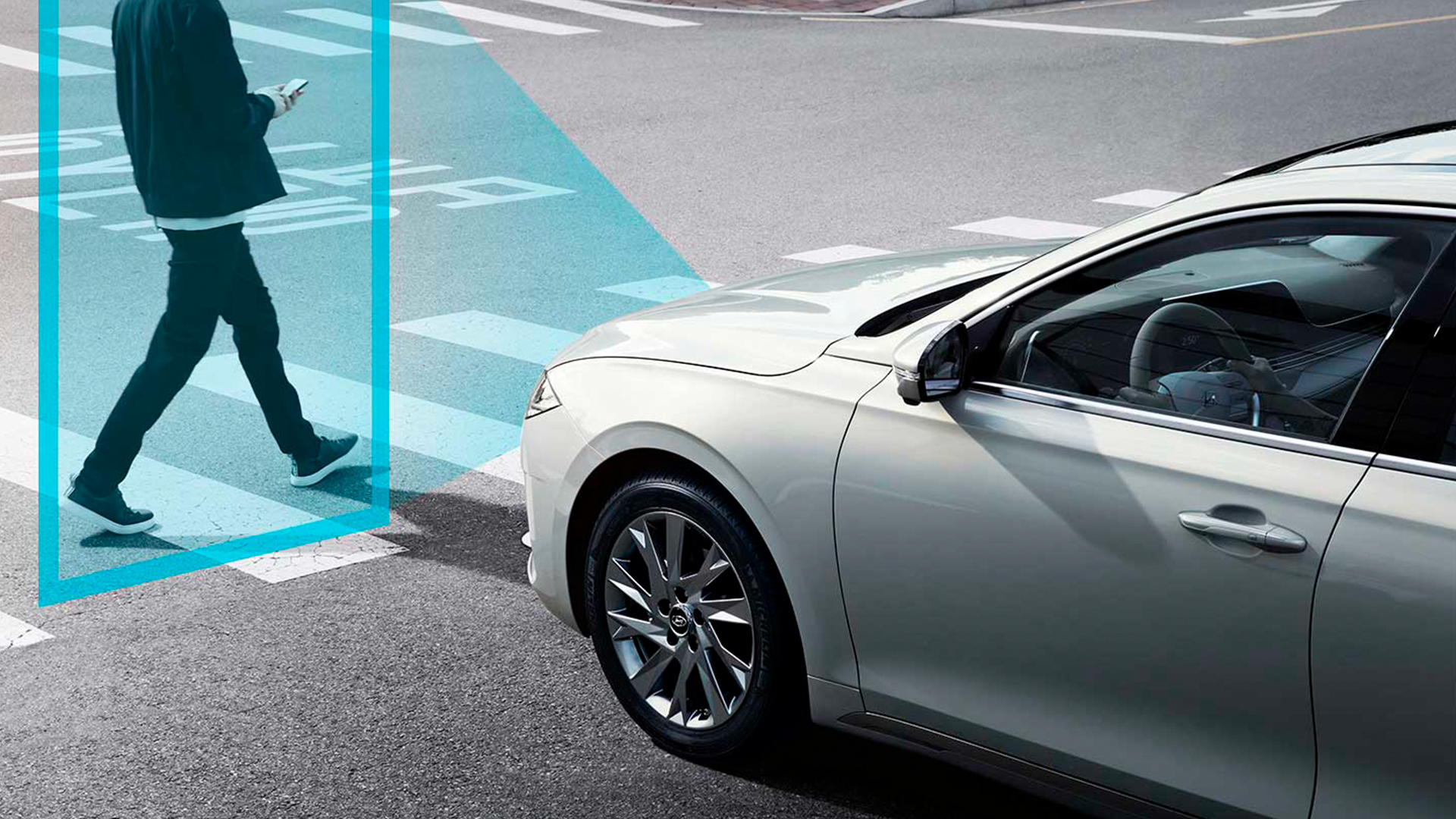
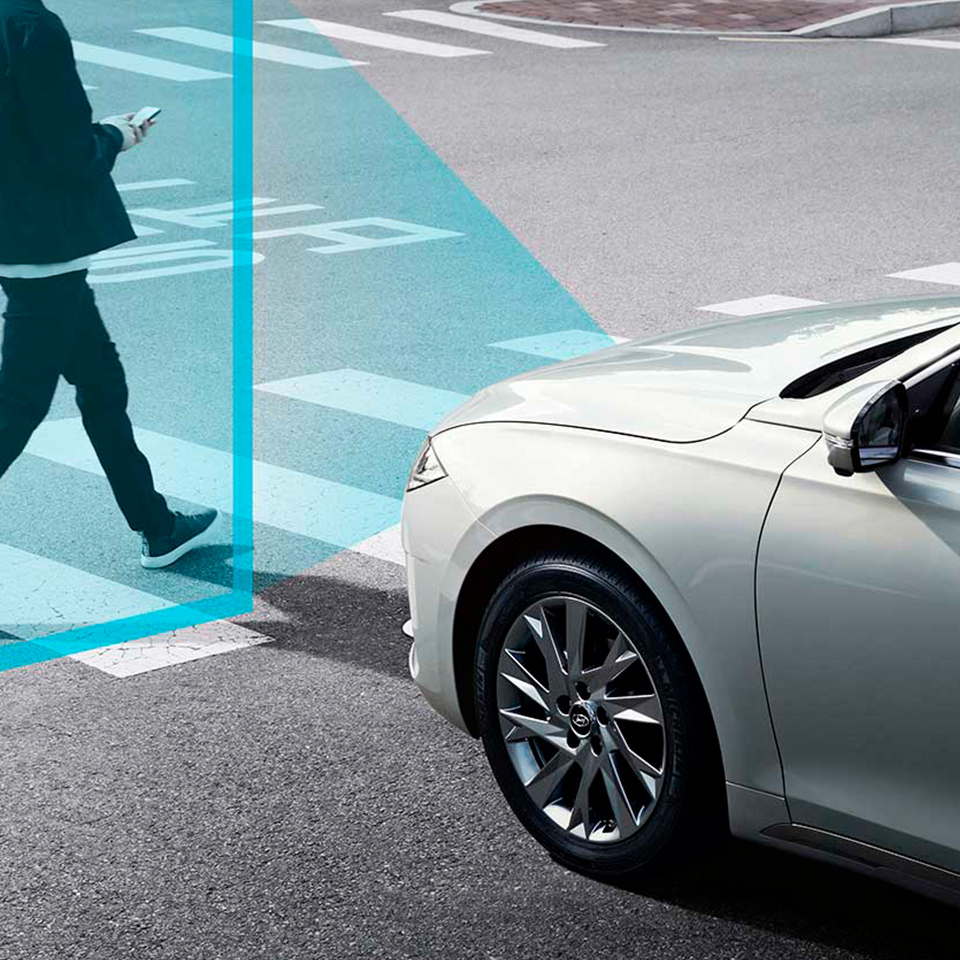


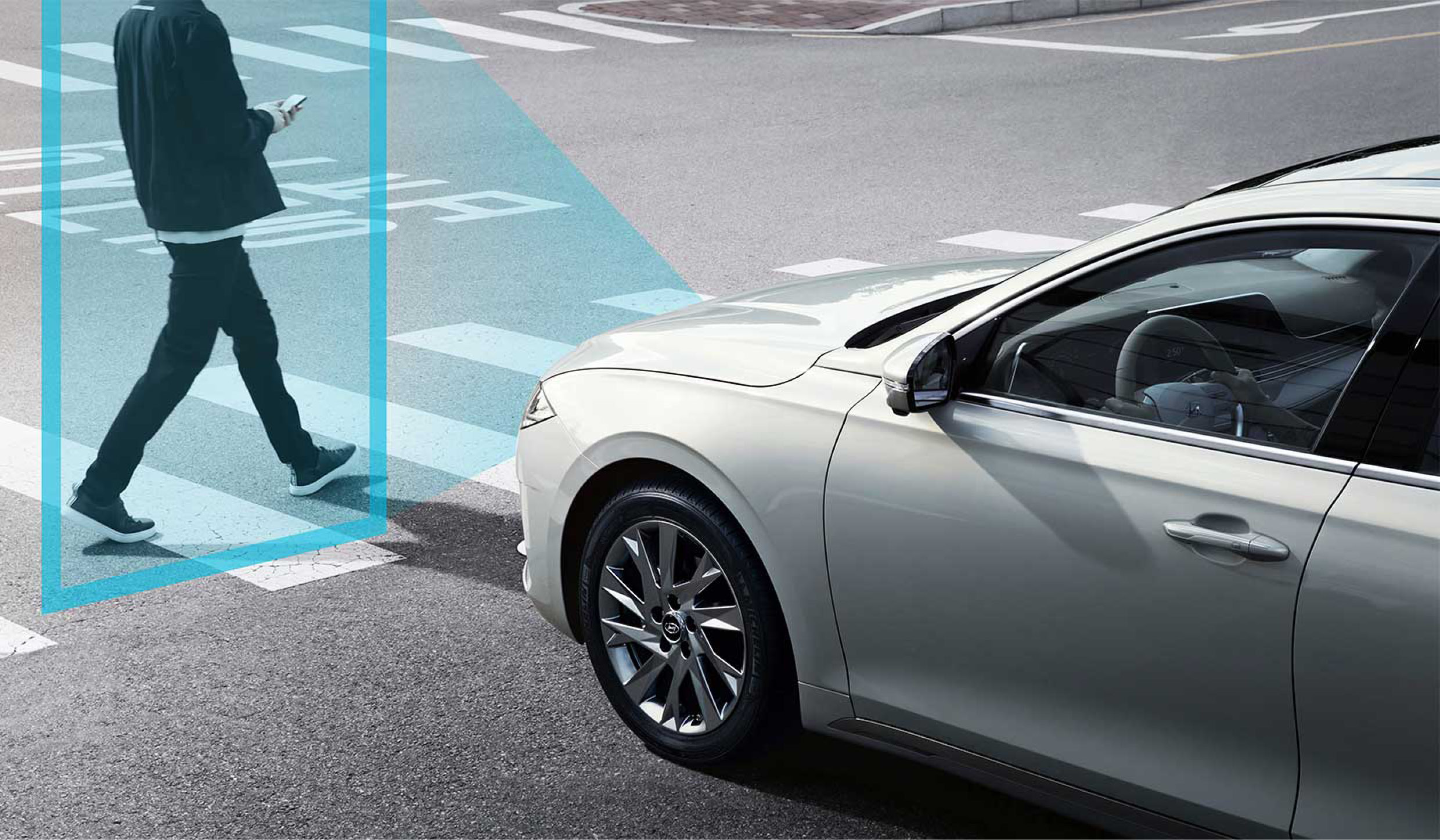
Car safety features have evolved from passive features such as seatbelts and airbags to more active features like ABS (Anti-lock Brake System) and ESC (Electronic Stability Control) that intervene in the event of an emergency to lower the probability of an accident. This evolution is continuing today with ADAS technology, whose objective is to detect the incoming danger early and avoid accidents from occurring altogether.
According to the analysis of insurance companies’ and police’s data by the Insurance Institute for Highway Safety, FCA (Forward Collision-Avoidance Assist), one of the core technologies of ADAS, can reduce the number of accidents by 41%. Admittedly, the driver cannot simply delegate the driving responsibility to the ADAS systems yet—the liability for accidents still lies in the driver herself. But ADAS’s high-tech sensors and control mechanisms can detect the danger invisible to the human eye and substantially reduce the likelihood of the accident.
ADAS is not just about safety; it’s about providing convenience as well. Hyundai and Kia’s new HDA (Highway Driving Assist) System, for example, adjusts the speed according to the preset following distance and maintains the car’s position at the center of the lane. “There may be people who have never used HDA—but there are none who used it only once,” says one engineer, noting the system’s ability to significantly reduce driver fatigue in highway travel.
These ADAS technologies are already available for many of Hyundai and Kia’s new models. But their relative novelty presents a bit of a learning curve for the drivers. When does ADAS become active? What are the technology’s limitations? Of course, the answers can be found in the car’s operation manuals, which is unfortunately read by no one. Thus the purpose of this series: here we strive to provide succinct answers to the most frequently asked questions about ADAS.
This article, focuses on FCA (Forward Collision-Avoidance Assist), LKA (Lane Keeping Assist), and LFA (Lane Following Assist).
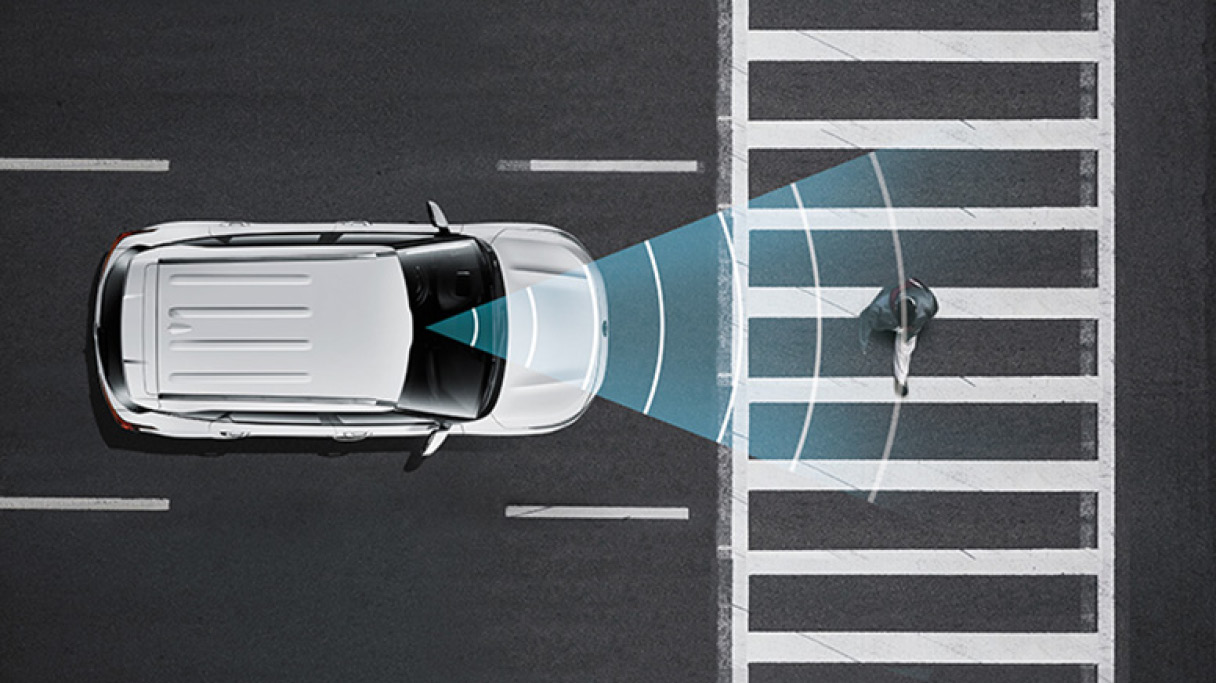
FCA is a safety feature that sounds alarms when a collision becomes imminent with cars, bicycles, or pedestrians ahead. When the driver fails to react and brake in time, the system automatically controls the brakes to avoid the collision. Prioritizing safety, Hyundai and Kia is including FCA (cars and pedestrians only) as a default option for all of their models released after 2018.
Q. Even within the same vehicle model, some FCAs detect cars and pedestrians only, whereas others detect cyclists as well. What accounts for the difference?
Hyundai and Kia’s FCA works by utilizing the information gathered by the forward-facing camera. It calculates the probability of collision with the pedestrians and/or vehicles ahead and assists the vehicle’s braking when necessary. The technology for detection is machine learning-based, and now with enough iterations, the system is one of the world’s best in both recognition capabilities and response time.
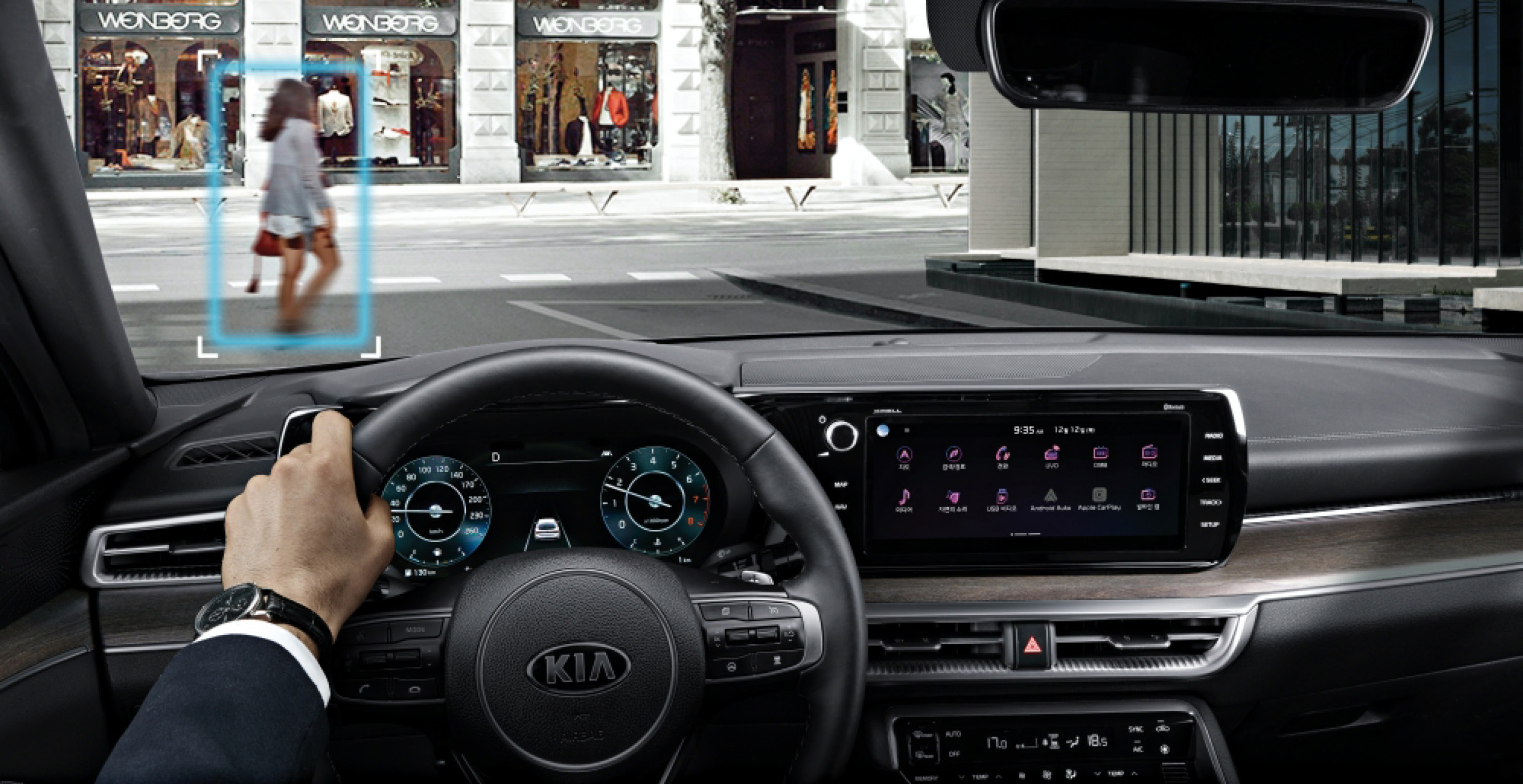
But recently we have added a forward-facing radar to the mechanism and adjusted the algorithm to detect not only vehicles and pedestrians but also cyclists as well. The radar uses radio waves to measure the distance to objects ahead, so it has the advantage in sensing distance as well as in being versatile across all weathers. So when using the radar and the camera simultaneously, both the range of detection and the types of targets can expand. We are currently trying to improve the system further to detect passing animals or on-road objects like boxes or debris.
The ability to detect and quickly determine the nature of the object ahead is absolutely crucial for FCA. After all, if the system is not certain about the identity of the object ahead, it cannot predict the object’s likely movement and thus cannot react in time to intervene and apply the brakes.
So the way it works is that we input the various characteristic movements of pedestrians and cars into the algorithm. The system compares this input with the information gathered from the camera and the radar. Once the identity of the object is established as a pedestrian, the system determines whether braking is needed. We made the process sound simple, but really, it is physically impossible to input the behavior of all indistinct objects the driver might encounter on the road (animals, rocks, boxes, etc.). So we focused on the most important objects—other vehicles, pedestrians, and now cyclists. But with continued advancement in ADAS technology, we expect to be able to expand the detection categories.
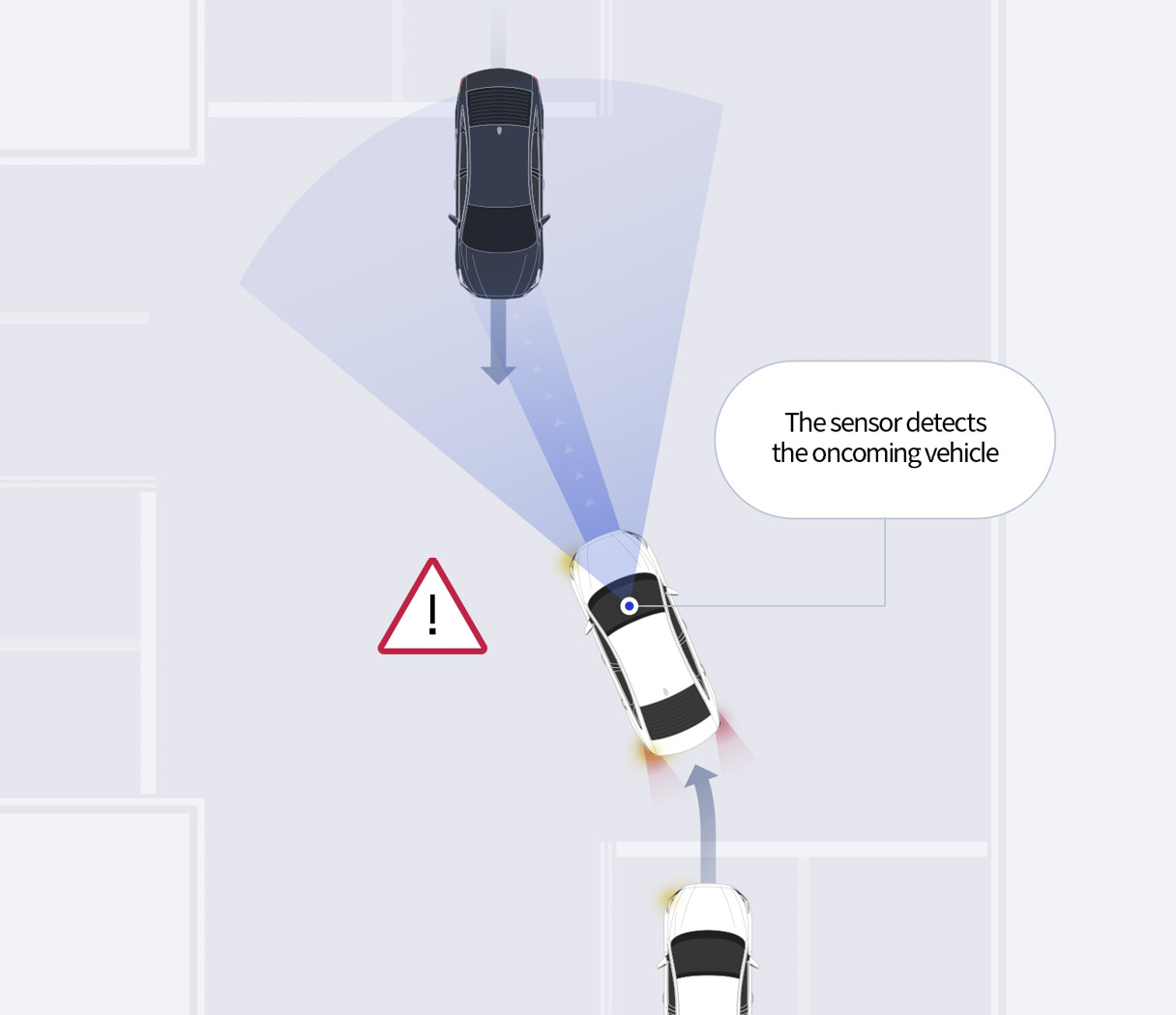
Q. What is the FCA-Junction Turning Function?
Hyundai’s The New Grandeur and Kia’s 3rd-gen K5 come with the Korea’s first FCA-Junction Turning (FCA-JT) function. FCA-JT detects the oncoming car from the other side when turning left at a junction and, if a collision appears likely, applies the brakes to stop the car. Whereas the existing FCA only protected the driver against forward collisions, FCA-JT expands the range of protection to include collisions at junctions. The function relies again on the forward-facing camera and radar as well as the control mechanism.
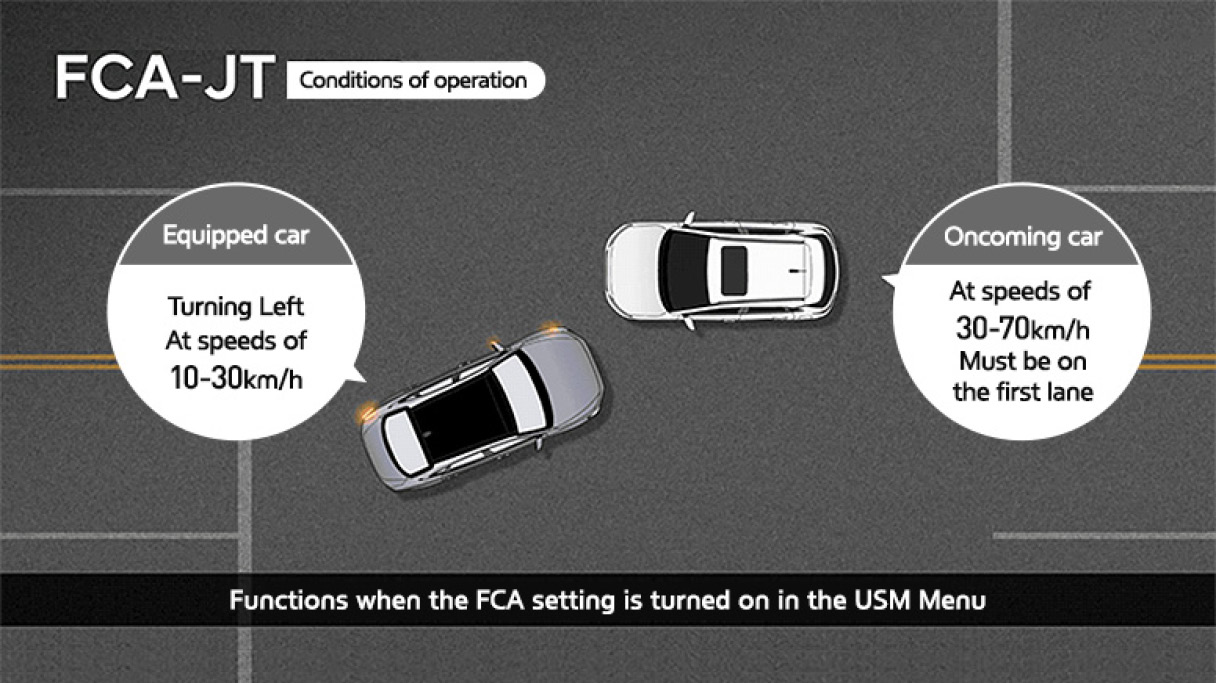
Turning at the junction often occurs at lower speeds—so FCA-JT works only when the equipped car is driving at speeds below 30 km/h. The oncoming car, on the other hand, can be detected at the max speed of 70 km/h. At speeds higher than that threshold, FCA-JT may not be able to detect the vehicle. Finally, it is absolutely crucial to turn on the left turn signal, as doing so allows the system to understand the driver’s intent to turn left.
The two features may appear similar in the sense that both help the driver maintain the lane of driving. But the way they work comes with some important differences.
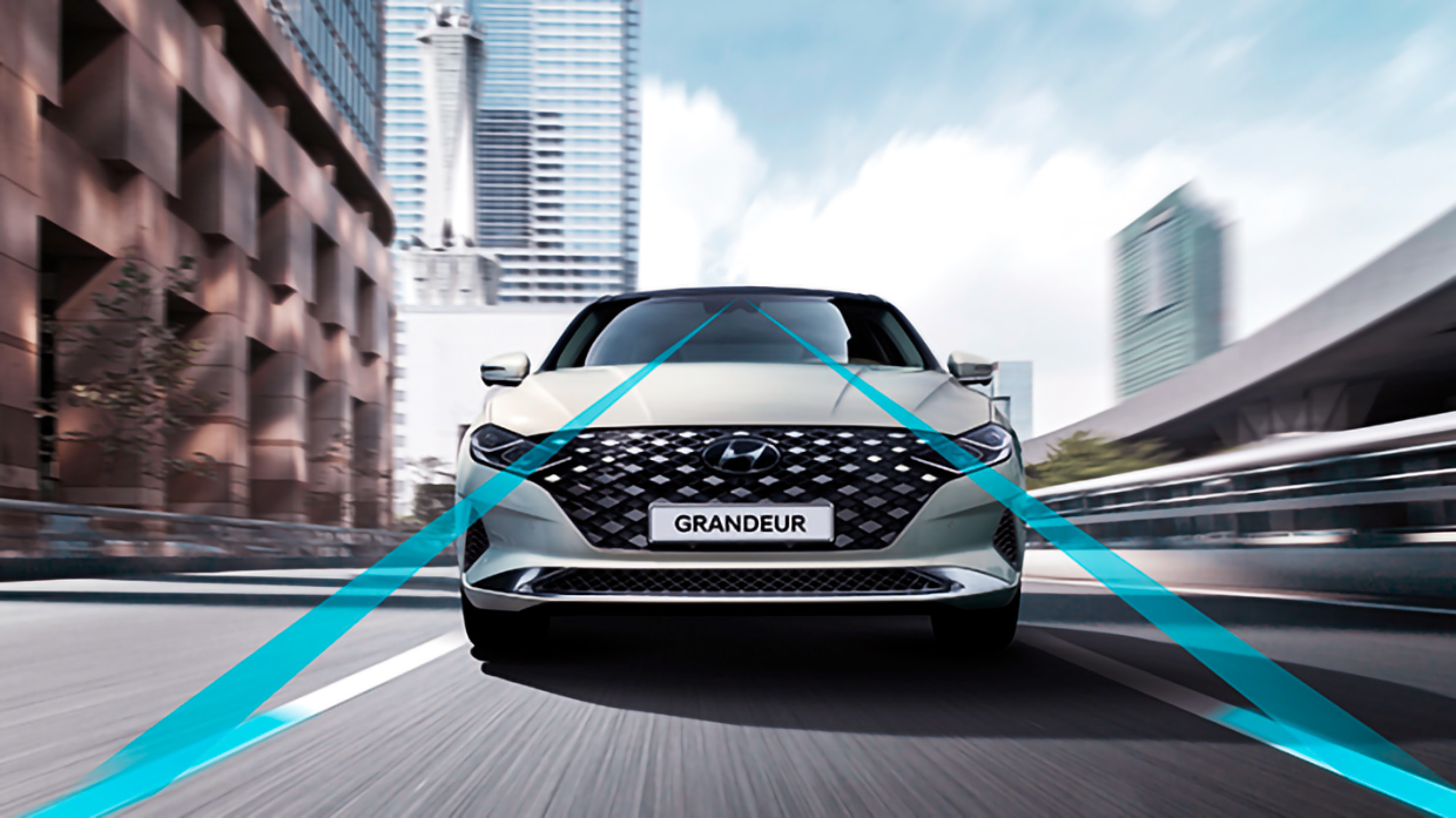
Q. What is the difference between LKA and LFA?
LKA intervenes with the steering precisely at the moment when lane drifting is about to occur; on the other hand, LFA constantly attempts to keep the vehicle at the center of the lane. Indeed, LFA becomes active when the vehicle is a mere 30 centimeters off the center, so it is nearly constantly active; now compare that to LKA, which is only active when the drifting is happening. That’s why LFA is allowed a much wider range control than is LKA.
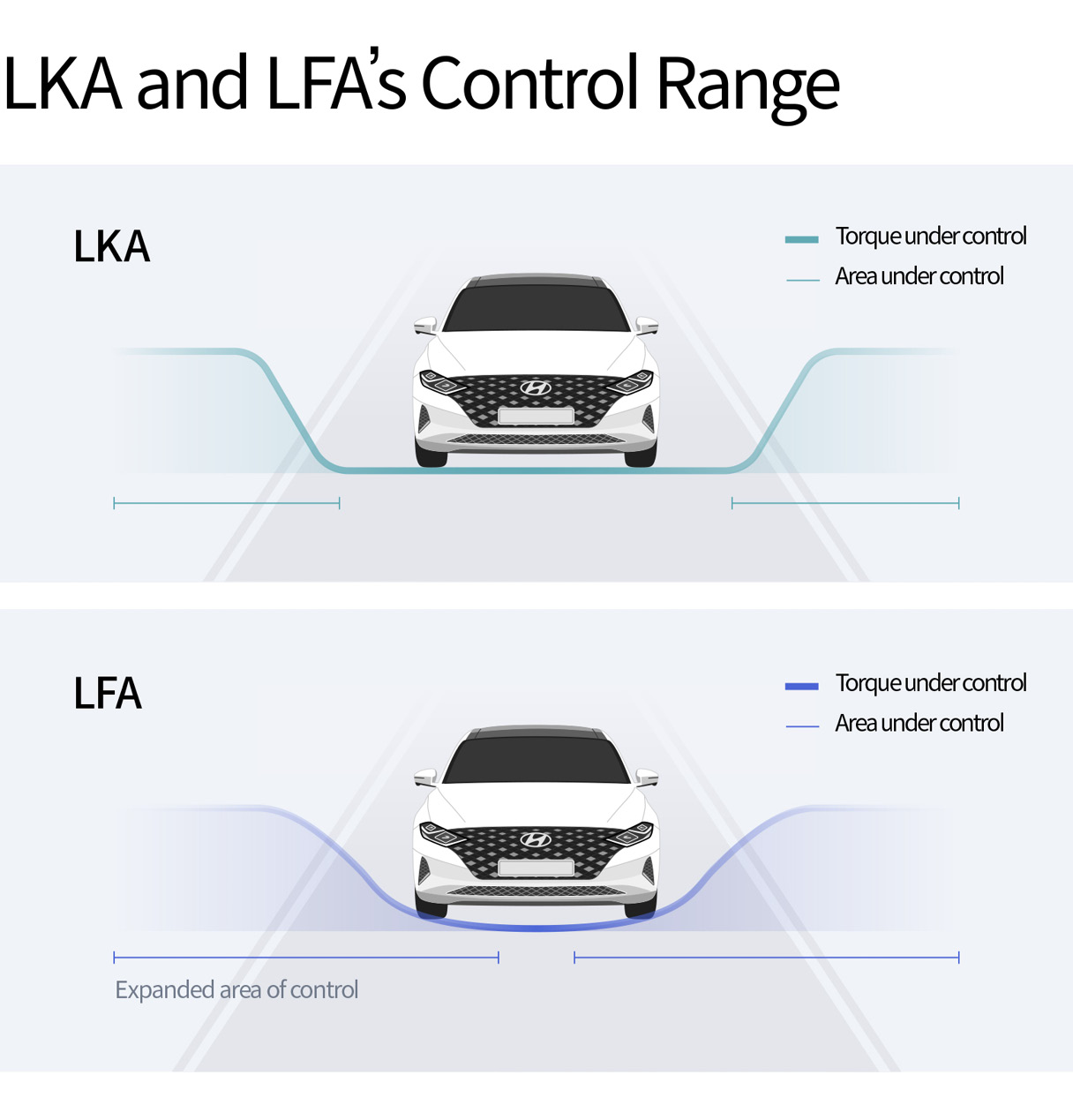
From the perspective of the driver, driving at the edge of the lane creates discomfort for both the driver himself and the drivers of surrounding vehicles. The center of the lane is the lane’s default safe position. Since LKA does nothing to bring the vehicle to the lane’s center, LFA is often considered as the more advanced feature. But because LKA functions as the final check before lane drifting, it nonetheless has value as an important safety check.
LFA is designed to preserve the driver’s natural control of the vehicle. To that end, LFA uses minimal force to subtly affect the steering to maintain the vehicle’s position at the lane’s center. Even when LFA is active, the driver feels little resistance to his control of the steering wheel. Too strong an intervention from ADAS can cause an awkward locking feeling and even make turning a hassle, so LFA’s control torque is intentionally limited.
On the contrary, LKA is designed to strongly and noticeably resist the driver’s manual control. When the car begins to lose direction and drift to another lane—the system understands this as any drifting without the turn signal on—LKA activates, offering strong resistance to the steering wheel. If this kind of strong resistance is felt too often, driving will become a chore. But in critical situations, it becomes a necessary final barricade to prevent accidents.
Q. So what are the differences in the conditions of the two systems’ operation?
LFA and LKA function at different speeds as well. The New Grandeur’s LKA works at speeds between 60 and 200 km/h, while its LFA functions at speeds between 0 ~ 200 km/h. The ranges vary a bit by the car model, but the minimum speed at which the two systems function always has this disparity.
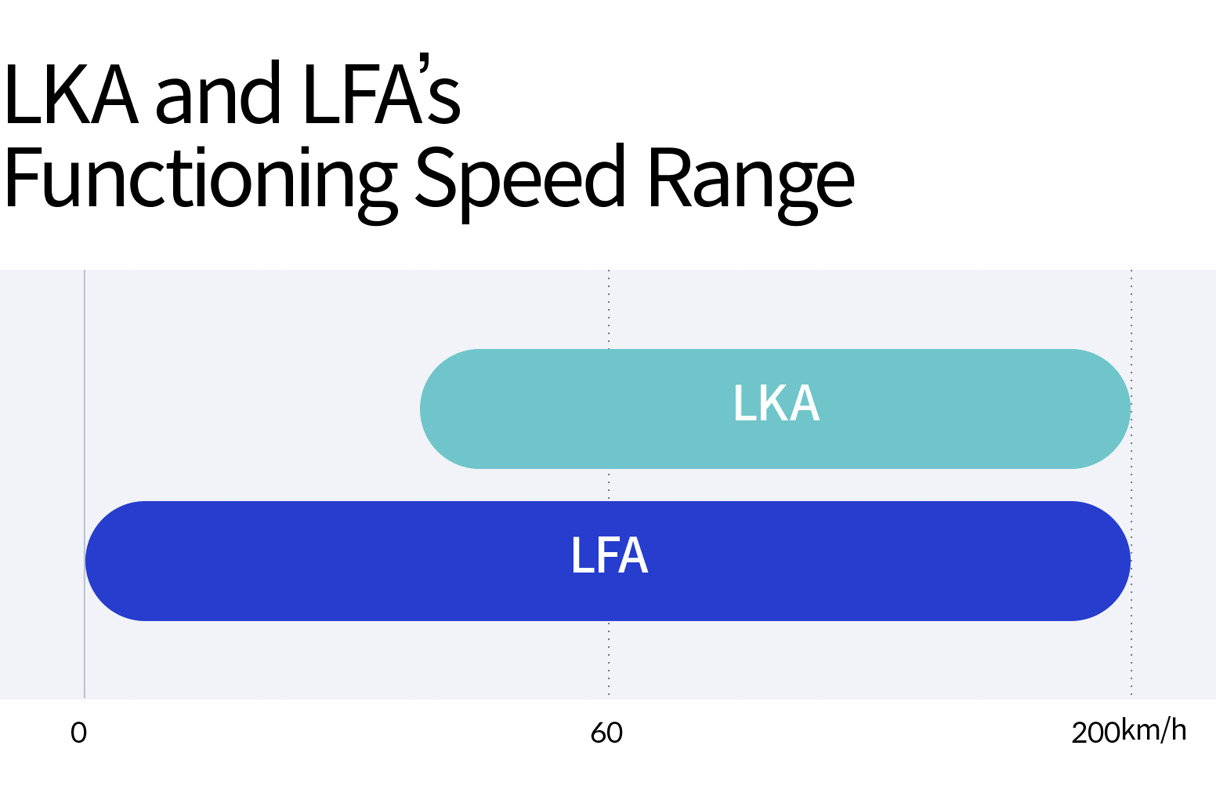
LKA uses only the camera to gather the lane information, which of course is crucial for keeping the lane. But if the equipped car’s following distance is too short, the lane’s visual may be blocked by the car ahead, thus interfering with the function of LKA. The function restores to normal once the following distance expands again. Since the following distance is a function of vehicle speed, the system is set to operate at speeds above 60 km/h.
In city driving, using LKA is a challenge in a double sense: cars move slower, and lanes are often inconsistently drawn. These complexities prevent LKA from working at its full capacity, so the minimum functioning speed was thus set at 60 km/h, excluding a bulk of city driving and therefore ensuring the technology’s reliability. Of course, research efforts are underway to develop LKA that can accommodate slower speeds as well.
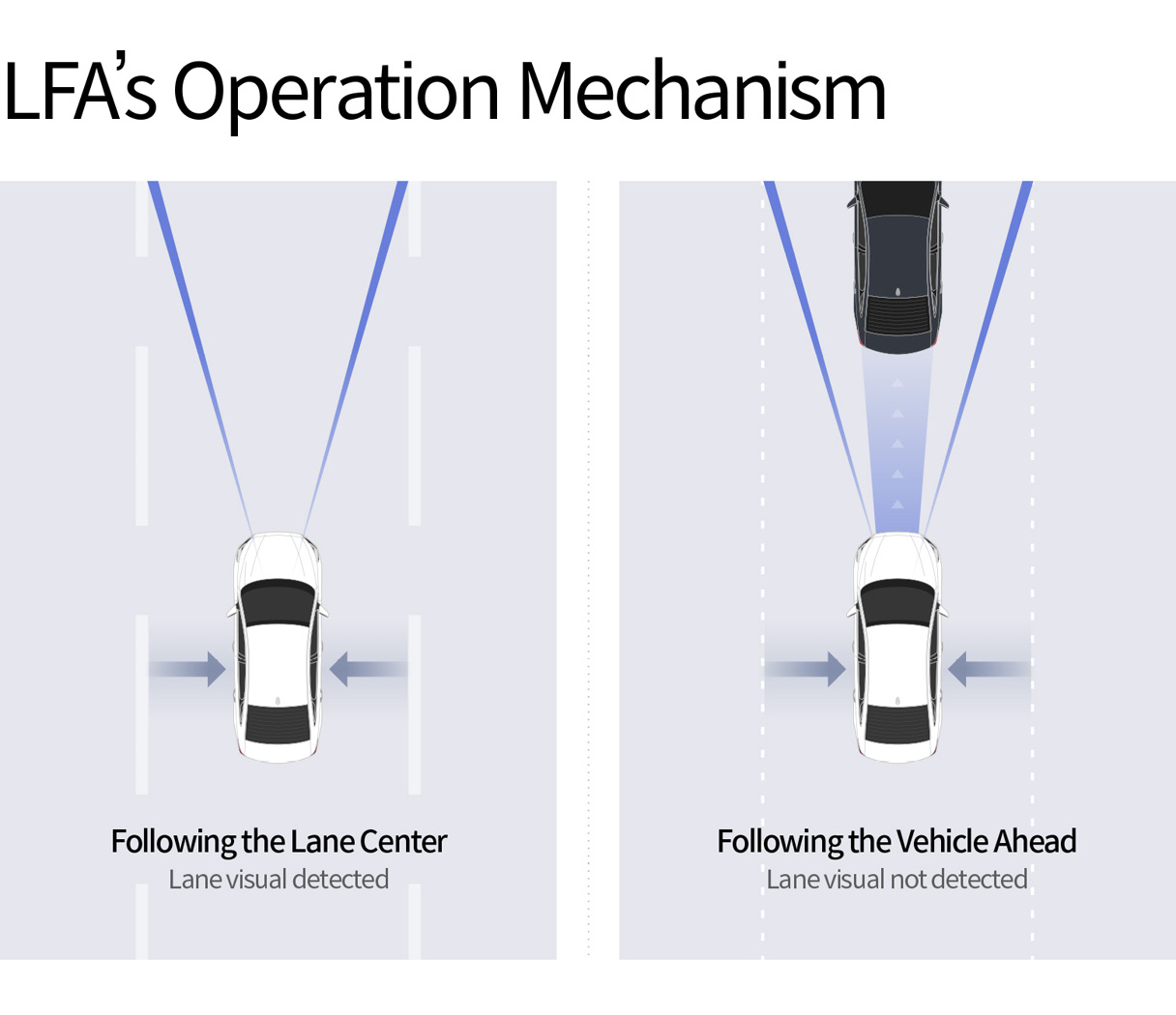
LFA detects the lane and keeps the vehicle at the center, but even when the lane visual is not detected, it still functions by aligning the car’s center to the vehicle ahead. This flexibility allows the driver to drive safely even when the lane lines are blurred or invisible. Due to this difference, LFA, unlike LKA, can function at speeds below 60 km/h where the lane lines may be blocked by the vehicle ahead.
Q. It seems that LFA and LKA sometimes deactivate when turning a curve. Why is this so?
Indeed, LFA and/or LKA sometimes turn off when turning a sharp curve. This is partially due to the limited range of the sensor, but mostly it is for the passengers’ safety.
Basically, LFA and LKA are designed to help the steering so as to prevent lane drifting. But in either case, if the driver really wants to turn, he can steer hard to override the forces of both. For example, if there is a sudden obstacle in the lane, the driver must turn the steering wheel to avoid a collision. If the resistance from the ADAS features is too strong to prevent this turn, then accidents will occur. We did not want this to happen, so we set the system’s control force lower than the force of typical manual steering.
When turning a sharp curve, the steering angle has to be large; meaning, in order to main the lane of turn, the ADAS systems will need to apply a large force to the steering wheel to keep the lane. But what if a sudden happening occurs on the lane during the turn to necessitate a move to the other lane? The heavy resistance from the steering wheel may prevent the driver from properly avoiding the obstacle. For drivers without arm strength, the danger may be amplified.
This is the reason why LFA and LKA deactivate during sharp turns. Even for milder turns where the deactivation isn’t automatic, the drivers must be aware of steering resistance and mentally prepare for manual intervention.
In this article, we explored in detail the safety features of ADAS, namely FCA, LKA, and LFA. Particularly, we recommend the safety-conscious drivers to become familiar with FCA, which, while not always active, comes to rescue in the most pressing moment of danger to save lives.
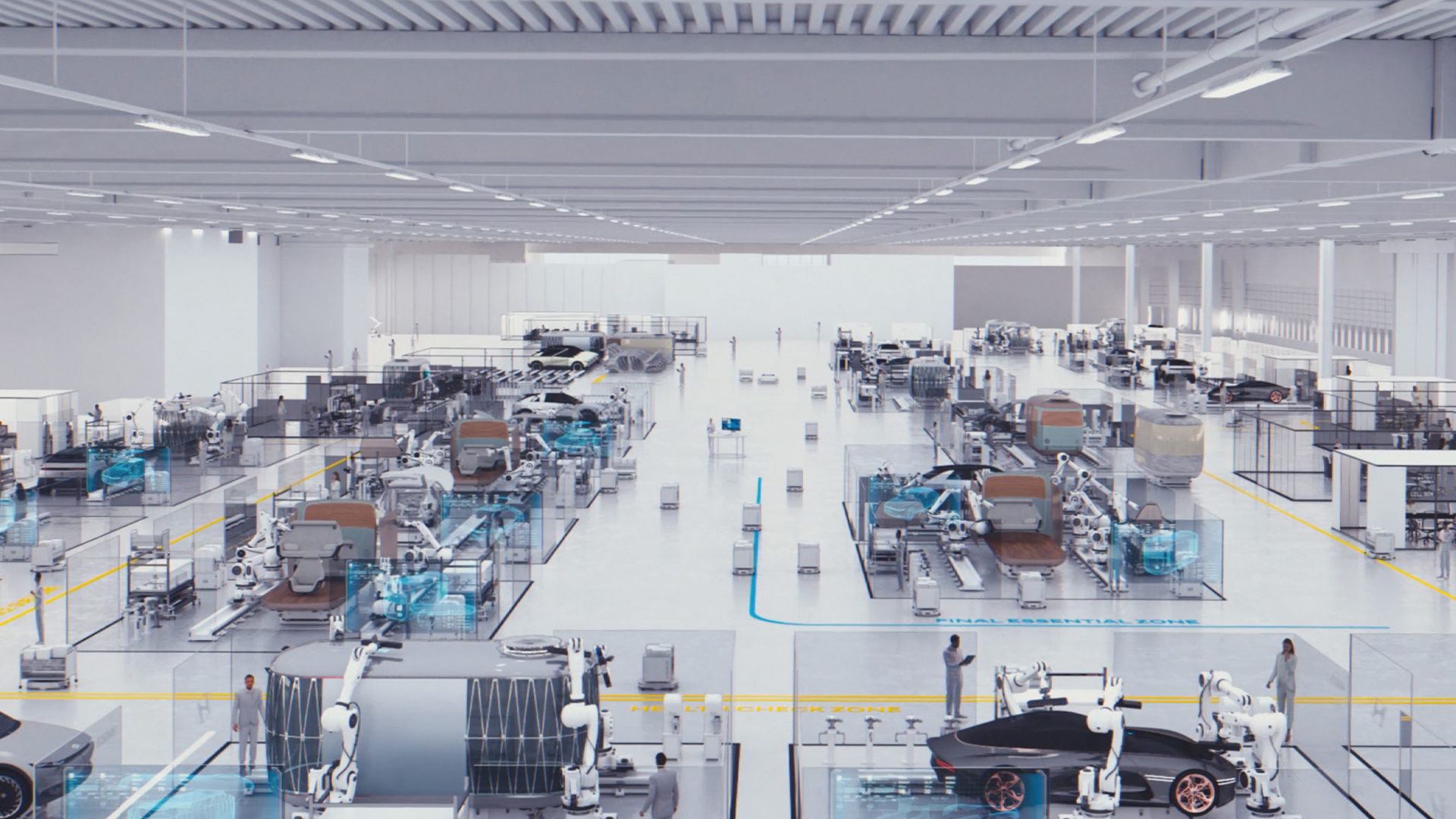
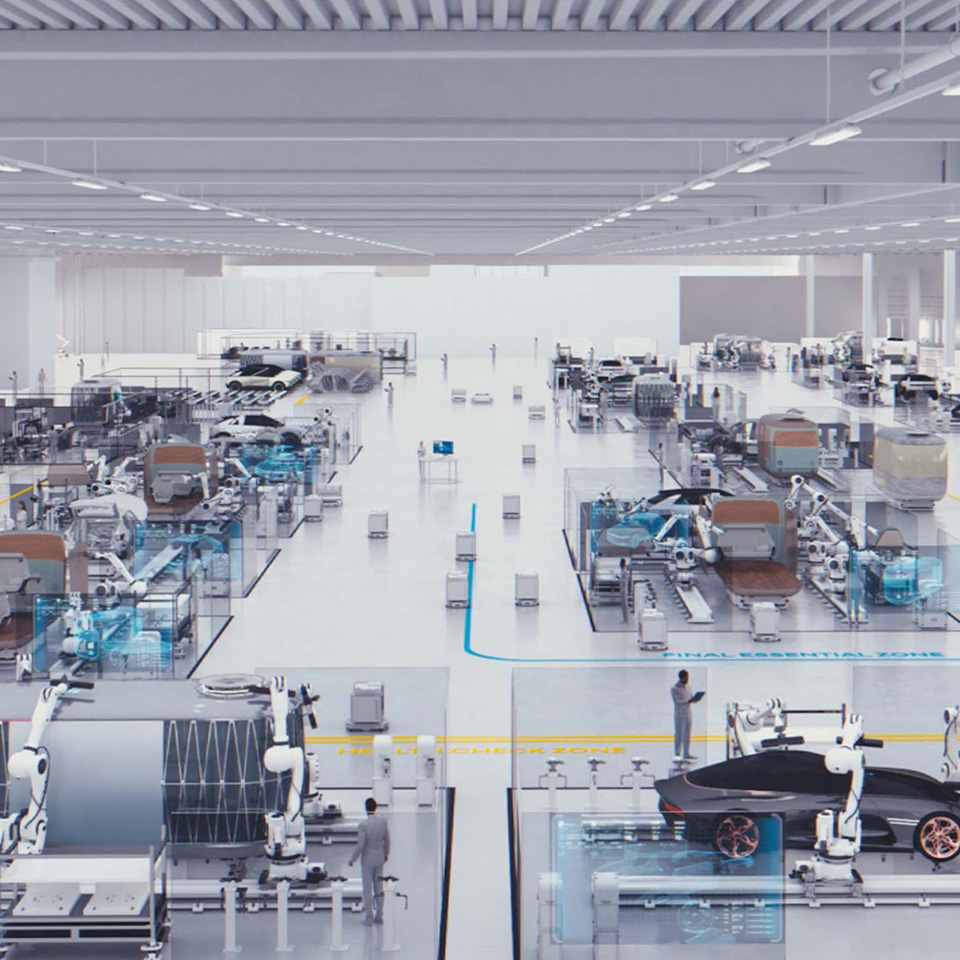
Value Chain Innovations from Creative Destruction
2022.01.17 6min read